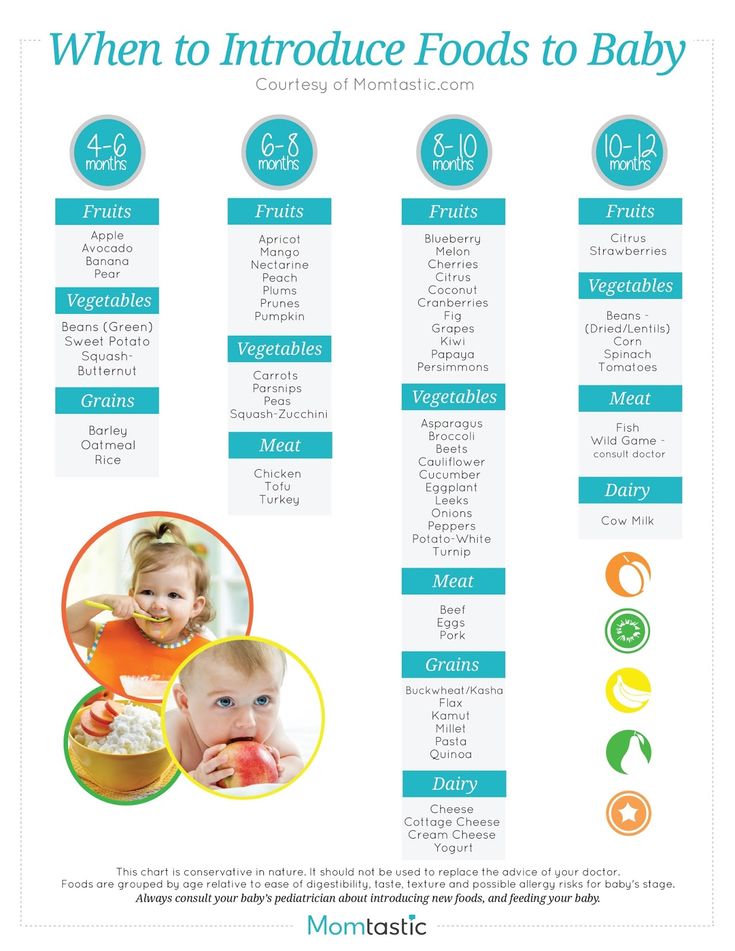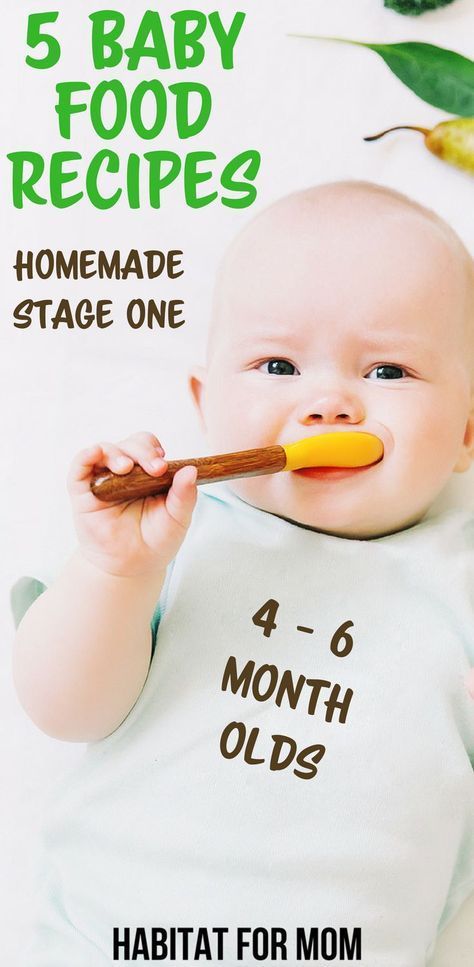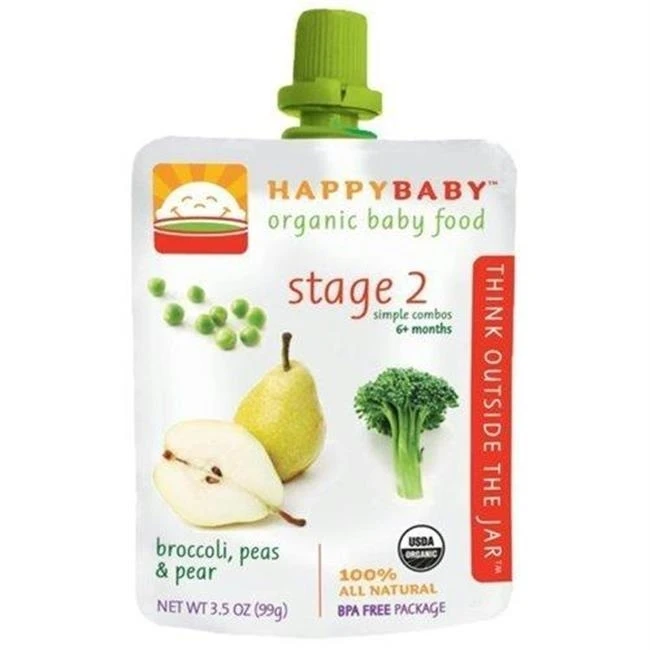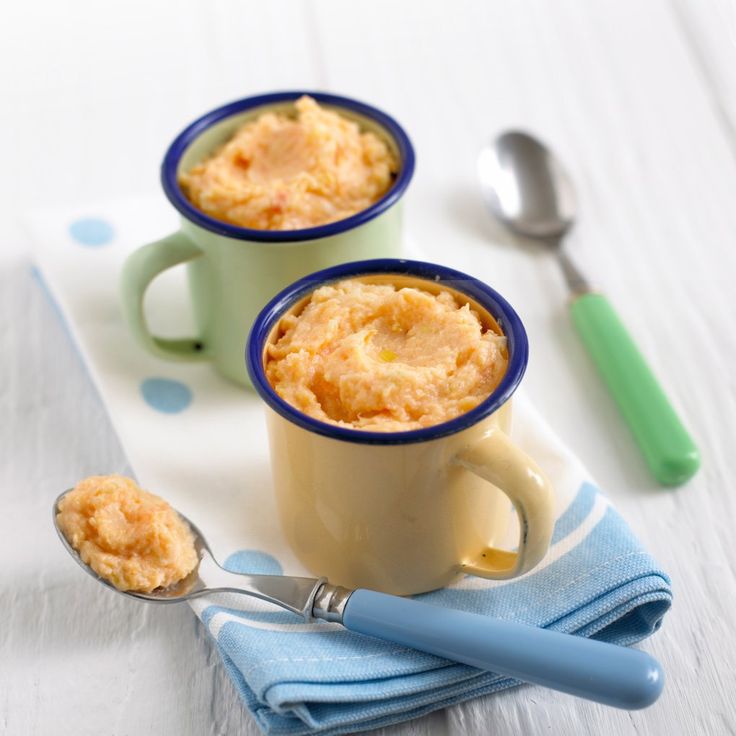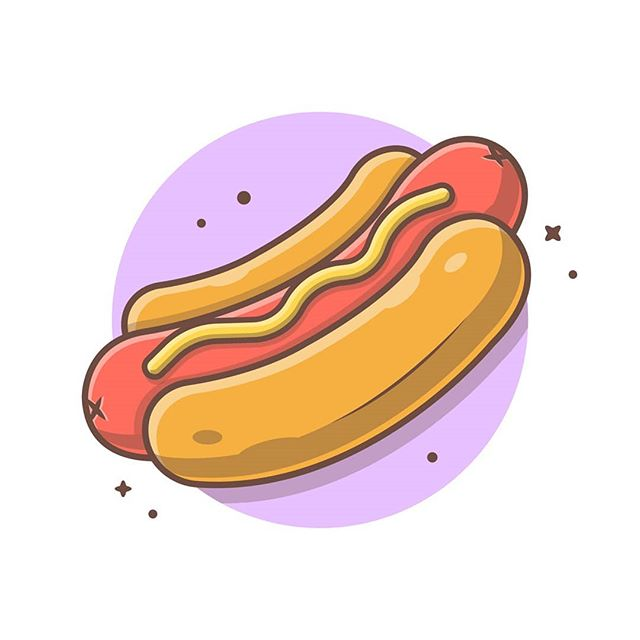Good baby food starters
10 Baby Food Purees (Stage 1)
Everything you need to know about making stage 1 baby food, including 10 recipes for tasty purees that are perfect for introducing solids.
Introducing solids to your baby is such an exciting milestone but it can also be an overwhelming time with lots of questions. When is your baby ready for solids? Which foods should you start with? And how do you make homemade baby food?
I’m here to make sure you have all the information you need! Plus sharing 10 baby food purees to give you some ideas of where to start if you’ve decided to make your own baby food.
When To Start Solids
Most pediatricians recommend babies start solids between 4-6 months, but you know your baby best so trust your gut and do what feels right to you (with guidance from your pediatrician)!
I have a great guide for introducing solids to babies where I outline the basics and share my approach, but just to recap, here are some signs that your baby is ready to start enjoying solid food:
- Baby can hold their head up in an upright position without too much bobbing
- Baby can sit up with (or without) support
- Baby has lost the tongue thrust reflex
- Baby puts their hands or toys in their mouth
- Baby has shown interest in food such as leaning forward and opening their mouth or trying to grab food you’re eating
How to Introduce Solid Food to Baby
Once you’ve decided that your baby is ready to start solids, it’s go-time. There are different approaches to this including baby led weaning, where you skip purees all-together and let your baby feed themselves with finger foods from the start and traditional weaning, which starts with pureed (or blended) foods.
With Olivia I did a hybrid approach where the first few foods we introduced where purees and then we started with a few finger foods when she seemed ready. I go into more detail on this in my introducing solids post.
To be honest, if you’re planning to do baby led weaning this post probably won’t be that helpful because it’s focused on how to make a variety of single ingredient purees.
What is Stage 1 Baby Food?
If you decide to use purees, you’ll quickly notice that baby food is labeled by three stages. Here is a breakdown of what these different stages mean:
- Stage 1 (4-6 months) – single ingredient foods that are pureed into a very thin consistency with no chunkiness whatsoever that can be served with a spoon.
- Stage 2 (around 6-8 months) – slightly thicker consistency and typically includes food combinations and the addition of spices like cinnamon, nutmeg, turmeric, mint, basil, etc. See my stage 2 baby food combos.
- Stage 3 (around 9-12 months) – thick blended foods with chewable chunks or small cut up pieces of easily chewed food.
Best First Foods for Baby
Solid foods can be introduced in any order, but most pediatricians recommend starting with a single-ingredient food that is easy to digest like pureed sweet potato, carrot, banana and/or avocado. Other options include pureed meats, poultry, beans and iron-fortified baby cereals like rice cereal or oatmeal.
You just want to be sure the first few foods are pureed super smooth and almost a liquid consistency. You can easily thin purees with breastmilk or formula.
As baby gets more practice with eating you can reduce the amount of liquid and offer purees with a thicker texture.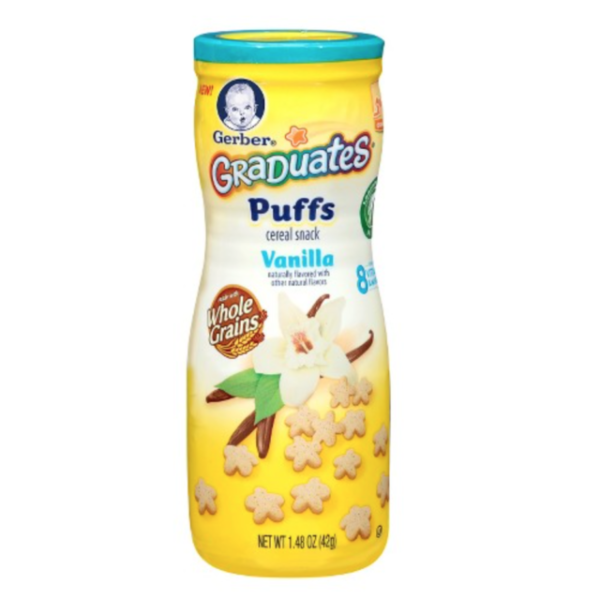
Food Allergies and Known Allergens
When introducing foods it can be helpful to introduce only one food every three to five days so you can watch for any signs of allergic reactions. A reaction could show up almost immediately or a few days after so it’s recommend to introduce one food at a time when starting out so you can track what may be causing a reaction in your baby. Reactions include: hives or rashes, itching, shortness or breath or more serious reactions like vomiting or swelling of the lips and tongue.
It’s also helpful to be mindful about common allergens. Foods like diary, eggs, peanuts, tree nuts, wheat, soy and shellfish should be introduced gradually after less allergenic foods have been tolerated. The previous recommendation was to wait on these foods, but that as since changed and in fact, delaying the introduction of these foods may increase the risk of a child developing allergies.
One food that is off limits until a baby is at least 1 year old is honey because of the risk of infantile botulism.
How to Make Homemade Baby Food
We covered when and what foods to start with. Now lets talk how to make a basic baby food puree! Don’t fret, it’s super easy. Here’s the basic process:
- Prep: you’ll want to start by ensuring your fruit or vegetable of choice is thoroughly cleaned. Even if you’re using organic fruits and vegetables, you’ll want to washed and dry your produce! Once the produce is clean, you’re ready to peel and chop into chunks. You can skip this step for some fruits or veggies.
- Cook: some foods like banana and avocado don’t need to be cooked, but many do. For cooking, you can steam, boil or roast. I recommend using a fork to test that they’re tender and soft.
- Blend: place cooked food into a blender or food processor and blend until smooth (or the consistency you desire), adding liquid (breast milk, formula or water) as needed.
That’s it! You’ve just made a homemade baby food puree!
Best Tools For Making Homemade Baby Food
You really don’t need any fancy kitchen appliances, but there are a few tools that will come in handy when making homemade baby food.
- Steamer basket – Steaming is one the easiest ways to cook foods for making purees and having a steamer basket is key. I have a really basic steamer basket that fits in most pots, but I also use the steamer basket that comes with my Always Pan.
- Blender – I’ve been using my Vitamix blender and love how smooth it makes the purees. You can also use a food processor or an immersion blender.
- Silicone ice cube trays – In the beginning I really liked to make large batches of pureed food and pour it into a silicone ice cube tray with a lid to freeze for later. It was perfect when babies aren’t eating big portions because each cube is about 1-2 ounces.
- Freezer bags – Once you have frozen cubes of puree you can transfer them to a freezer-safe bag. I love reusable Stasher bags for this.
- Storage containers – As soon as you start making homemade baby food you realize that you need lots of little containers.
 A friend loaned me a bunch of plastic storage containers for keeping homemade baby food and I also invested in these glass containers that are freezer safe.
A friend loaned me a bunch of plastic storage containers for keeping homemade baby food and I also invested in these glass containers that are freezer safe. - Permanent markers – When storing and freezing baby food you’ll want to label everything with the name of the food and the date.
- Baby food maker – if you’re looking for an all-in-one solution that steams food and blends it there are some cool gadgets (like the BEABA Babycook) that make homemade baby food a breeze!
10 Stage One Baby Food Purees
Ready to get started making some stage 1 baby food purees? Here are 10 easy recipes to get you started. These are the purees I used in the early days with Olivia. She loved all of these, but there are a ton of other purees you can try including pear puree, apple puree (aka applesauce), bean purees (like chickpea or lentil puree) and even chicken puree.
Sweet Potato
Sweet potatoes are a powerhouse vegetable! They’re packed with fiber, vitamins, minerals and antioxidants and babies love their sweet flavor.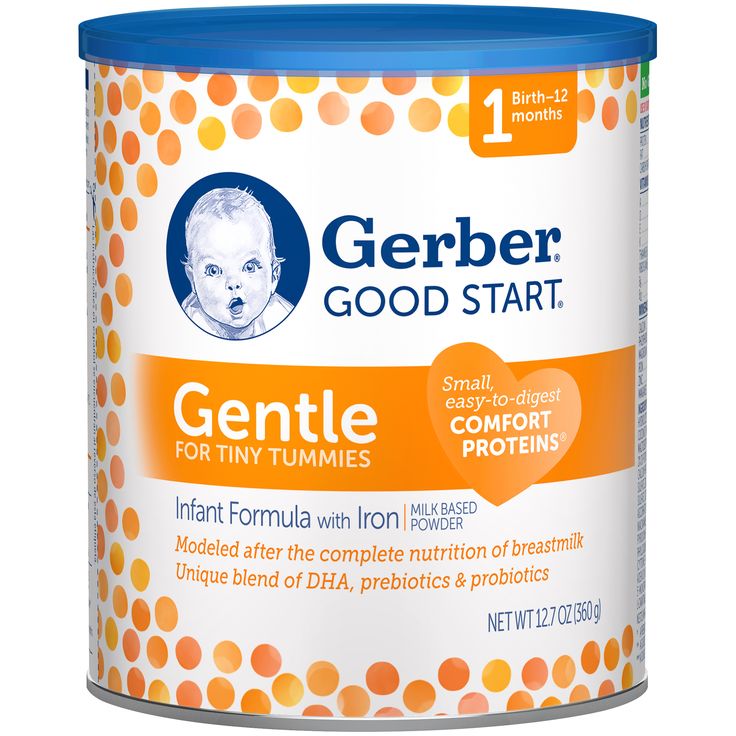
Sweet Potato Puree
4 from 9 votes
Sweet potato puree is so easy to make. Just bake your sweet potatoes, peel and blend until smooth! It's a great first food for babies, but can also be used in baking recipes, mixed into oatmeal, added to smoothies or served as a side dish.
Get Recipe
Carrot
Carrots are low on the allergy scale and easily digested by a tiny tummy. They are high in beta-carotene, an antioxidant that converts to vitamin A in the body, which is crucial for eye health and overall immune function.
Carrot Puree
4.03 from 40 votes
How to make carrot baby food by cooking and blending carrots into a smooth and creamy puree. Carrot puree make a great stage 1 starter food for babies.
Get Recipe
Avocado
Avocados are high in heart-healthy fats as well as fiber, vitamins, minerals and antioxidants! They’re incredibly nutritious and super easy to prepare.
Avocado Puree
5 from 3 votes
Avocado is great first food for babies. It contains healthy fats, it’s easy to blend and it’s delicious. Make it in your food processor or blender or simply mash!
Get Recipe
Banana
A great first food to introduce to babies, bananas are naturally soft and mushy, easy to digest and loaded with vitamins and minerals. The best part? You don’t need to cook them!
Banana Puree
5 from 2 votes
Fresh banana puree is a great first food and baby will love it because it tastes sweet! Easily make it by mashing or blending ripe bananas.
Get Recipe
Peas
Peas are naturally sweet and pack a punch with nutrition, containing a variety of vitamins, minerals and antioxidants. They are also high in protein, with 4 grams per half-cup serving. Fun fact, peas are actually a legume!
Pea Puree
5 from 5 votes
Pea puree is a great first food when introducing solids to babies and all you need is a bag of frozen peas and a blender or food processor!
Get Recipe
Butternut Squash
Technically a fruit, butternut squash is packed with fiber, vitamins and minerals.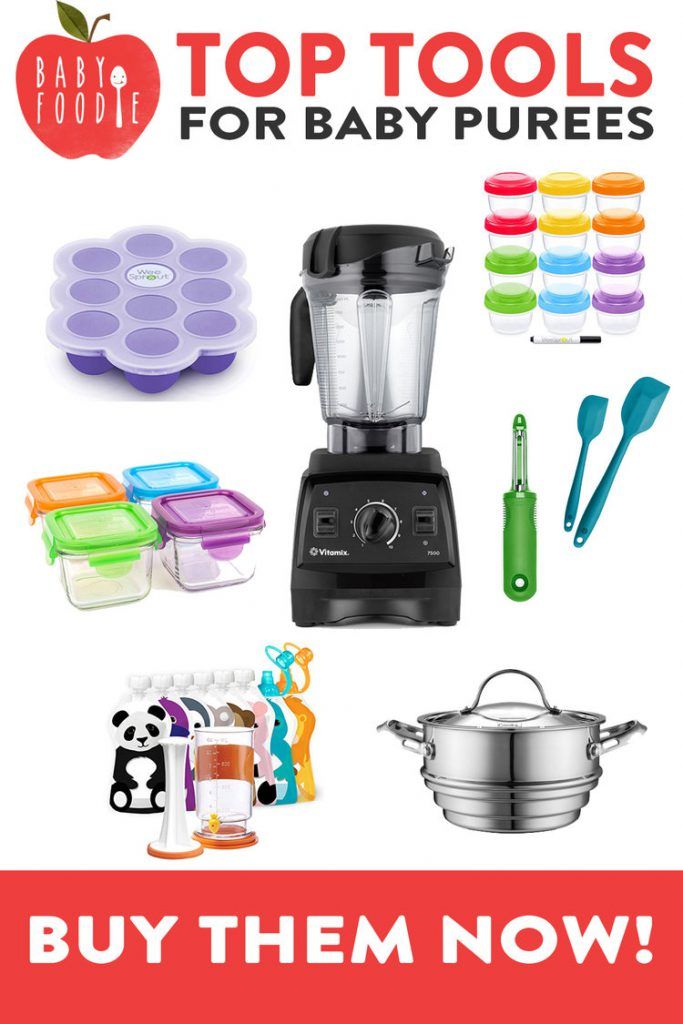
Butternut Squash Puree
Make butternut squash puree at home with this simple recipe! Just scoop the seeds, roast, blend and use in recipes that call for butternut squash puree. It's also a great first food for babies!
Get Recipe
Peach
Peaches are naturally sweet and perfect for introducing baby to solid foods. They are rich in many vitamins, minerals and antioxidants.
Peach Puree
5 from 4 votes
Peach puree is so easy to make using fresh peaches! It's a great first food for babies, but can also be used as a topping or mix-in for breakfast, dessert and drink recipes.
Get Recipe
Mango
Rich in vitamins, minerals and antioxidants, mango is especially high in vitamins A and C. They also contain a group of digestive enzymes called amylases which help little tummies just starting with solid foods.
Mango Puree
5 from 3 votes
How to make a delicious mango puree out of fresh (or frozen) mango.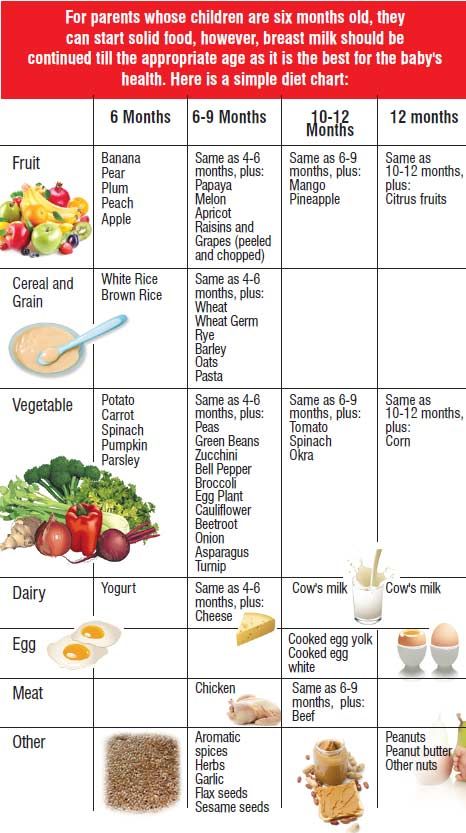 It's perfect for serving to baby or to use in recipes.
It's perfect for serving to baby or to use in recipes.
Get Recipe
Blueberry
Small but mighty! Blueberries are known as a superfood. Superfoods are usually plant-based and rich in nutrients that are beneficial to your health such as vitamins, minerals, healthy fats and fiber.
Blueberry Puree
5 from 2 votes
Blueberry puree is full of antioxidants and vitamins and makes for a quick and easy first food for baby! It can also be used as a topping or mix-in for breakfast, dessert and drink recipes.
Get Recipe
Strawberry
Strawberries pack quite a health punch! They are low calorie, taste delicious and are a great source of vitamins, minerals and plant compounds.
Strawberry Puree
5 from 2 votes
Strawberry puree is easy to make and naturally sweet with no added sugar! Use it in baked goods, drinks or as baby food.
Get Recipe
How to Store Purees
Freshly pureed baby food should be stored in the fridge and used within 3-4 days.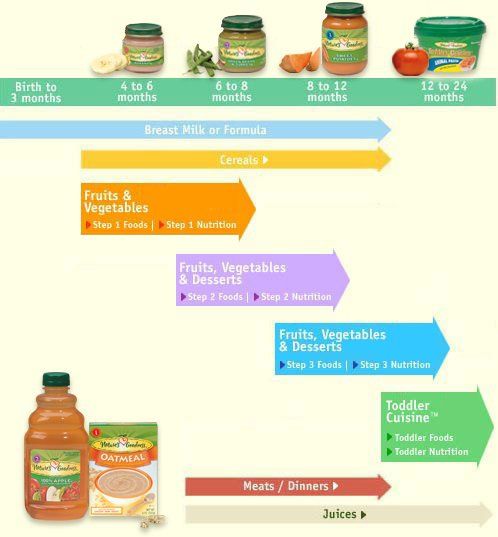 For longer storage, I recommend freezing purees in an airtight container. I like using silicone ice cube tray or freezer safe jars because they make it easier to thaw smaller amounts for serving to babies.
For longer storage, I recommend freezing purees in an airtight container. I like using silicone ice cube tray or freezer safe jars because they make it easier to thaw smaller amounts for serving to babies.
How to Thaw Frozen Puree
I recommend thawing frozen purees in the fridge the night before you want to use them. In a pinch, you can also thaw it quickly with a warm water bath. It thaws quickly if you’re defrosting a small amount to serve to a baby.
FAQ
Can I store homemade baby food purees?
Yes! Making large batches of purees and storing them in the refrigerator or freezer makes feeding baby homemade purees a breeze.
Can you freeze homemade purees?
Freezing baby food that has been made with frozen fruit or vegetables is fine, as long as you have cooked the frozen foods first. Do not refreeze foods that have thawed without cooking. I recommend labeling baby food with the ingredient and date before you place them in the freezer.
Can you freeze baby food made with breast milk or formula?
If you are freezing baby food that has been mixed with fresh breast milk you’re fine! However, you should not freeze baby food that has been mixed with previously frozen breast milk. Once frozen breast milk has been thawed, it should never be re-frozen.
If you are using formula, it should be okay to freeze baby food that has been mixed with it. Most formula companies don’t recommend freezing formula, but you’re using such a small amount.
You can also freeze the baby food purees without adding any liquid. You can then thaw the baby food puree in the fridge overnight and then thin the food to the desired consistency with breast milk or formula right before serving.
This post about freezing baby food has a ton of great insight and tips.
Should I use organic fruits and vegetables?
I recommend using organic produce when possible, though I realize this isn’t always in the budget. Either way thoroughly rinsing your fruits and vegetables is an important step whether they’re organic or not.
Either way thoroughly rinsing your fruits and vegetables is an important step whether they’re organic or not.
This list of the dirty dozen fruits and vegetables from the EWG is a good guide if you can only budget for some but not all organic produce.
Is it safe to thin baby food with cow’s milk?
From a nutritional point of view, most doctors recommend waiting to introduce babies to cow’s milk until one year of age. If you need to thin your puree you can use breast milk, formula or plain water.
What is the difference between stage 1 and stage 2 baby food?
Stage 1 purees are very thin with no chunkiness and are single ingredients. Stage 2 baby foods can be more elaborate with food combinations as well as chunkier textures.
More Recipes for Resources
- Baby Pancakes
- How to Make Oatmeal For Babies
- Baby (+ Toddler) French Toast
- Applesauce
- Baby Yogurt Melts
- 6 Baby Food Combinations (Stage 2)
Be sure to check out all of the baby food recipes here on EBF.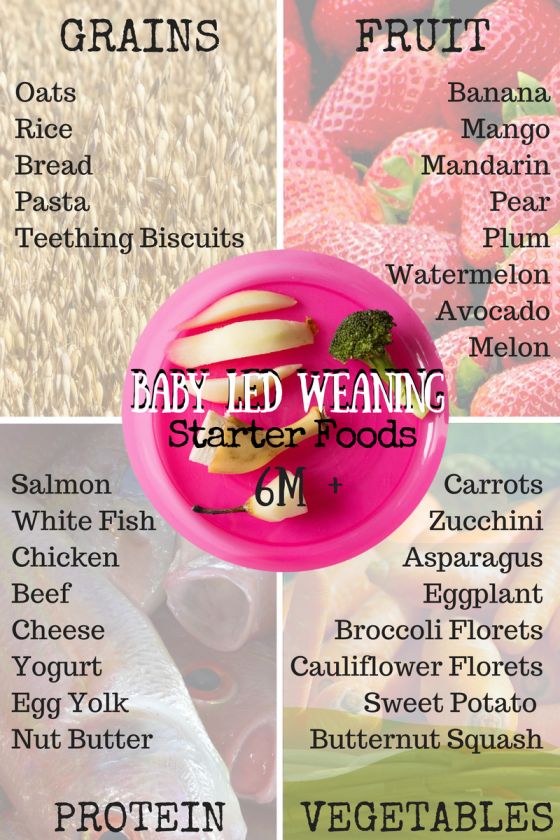
10 Stage One Baby Food Purees
5 from 5 votes
Everything you need to know about making stage 1 baby food, including 10 recipes for tasty purees that are perfect for introducing solids.
Print Recipe Pin Recipe
Prep Time 10 minutes
Cook Time 20 minutes
Total Time 30 minutes
Servings 6
Sweet Potato
- 2 cups steamed and peeled sweet potatoes
- water, breast milk or formula to thin
Carrot
- 1 lb steamed and peeled carrots
- water, breast milk or formula to thin
Avocado
- 1 avocado
- water, breast milk or formula to thin
Banana
- 1 banana
- water, breast milk or formula to thin
Pea
- 2 cups cooked peas
- water, breast milk or formula to thin
Butternut Squash
- 2 cups steamed and peeled butternut squash
- water, breast milk or formula to thin
Peach
- 3 ripe peaches
- water, breast milk or formula to thin
Mango
- 2 ripe mangoes
- water, breast milk or formula to thin
Blueberry
- 2 cups blueberries
- ½ cup water
Strawberry
- 2 cups strawberries
- water, breast milk or formula to thin
Add veggies or fruit into a high powered blender or a food processor.
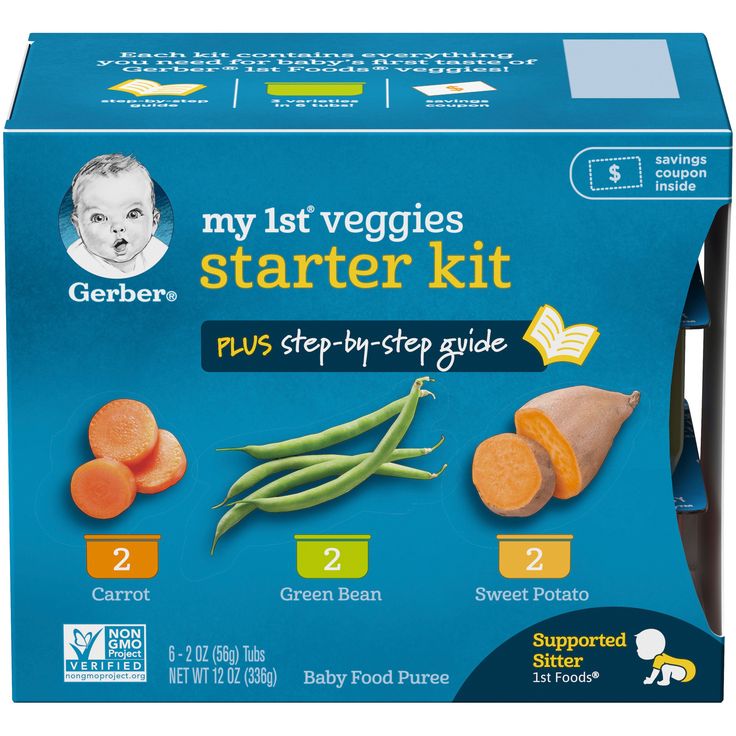 Blend and add liquid until you reach the consistency you desire. You can make the purees smooth and thin for young babies or thicker and chunkier for older babies.
Blend and add liquid until you reach the consistency you desire. You can make the purees smooth and thin for young babies or thicker and chunkier for older babies.
blender
food processor
Serving: 1sweet potato Calories: 75kcal Carbohydrates: 17g Protein: 1g Sodium: 48mg Potassium: 292mg Fiber: 3g Sugar: 4g
DID YOU MAKE THIS RECIPE?
Please leave a comment and star rating on this post and share on social media using the hashtag #eatingbirdfood. I love seeing your recipe shares!Best Early Finger Foods for Baby (With Tips, Visuals, and Recipes)
Use this list of safe, nutritious, and easy to eat finger foods for baby to help you know exactly what (and how) to offer at meals and snacks. Plus, find the best first finger foods, troubleshooting tips, and visuals of foods broken down by food group to keep things easy!
Finger Foods for Baby
After baby starts solids and is ready to move onto finger foods, you may feel a little confused by exactly what to serve and how to serve it.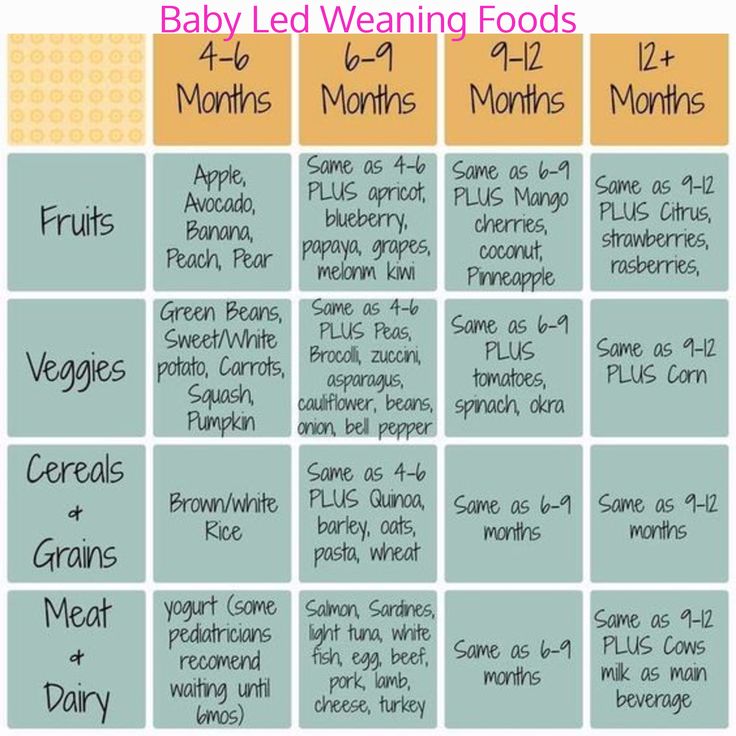 Which is totally normal because it can be scary to let baby feed themselves this way and we may not have any experience doing this—or we may have totally forgotten from our last kiddo!
Which is totally normal because it can be scary to let baby feed themselves this way and we may not have any experience doing this—or we may have totally forgotten from our last kiddo!
This list of finger foods for baby will cover some great first finger foods to start with, then set you up with plenty of healthy options from each food group.
TIP: Find more info on starting solids here and the best foods to start with if doing baby led weaning or purees with baby.
Healthy Baby Food
I love sharing these ideas for baby food since they are easy to prepare and serve and because I know how hard it can be to continue to come up with flavorful and healthy meals and snacks for our little ones. Let me tell you, I’m on my third kiddo and it can be such a challenge to feed him during the chaos of parenting the rest of my crew! These foods are wholesome and nutritious—perfect for your baby.
TIP: I’m a big fan of SpoonfulONE, a company that offers the most complete way to introduce food allergens to our kids. They make mix-ins, puffs, and crackers that are yummy and easy for babies and toddlers to eat. Learn more about their pediatrician-approved baby foods here. (sponsored link)
They make mix-ins, puffs, and crackers that are yummy and easy for babies and toddlers to eat. Learn more about their pediatrician-approved baby foods here. (sponsored link)
Best First Finger Foods
When baby is around 9 months, you’ll notice that they’re able to pick up smaller pieces of food with two fingers. This is known as the “pincer grasp” and is a sign that they’re ready to start finger foods. To be clear, when I say “finger foods” I mean small pieces of food that a baby (or toddler) can feed themselves.
Here are some of my favorite ones to start with that are all super soft, safe to eat, and easy to pick up.
- Scrambled egg, broken up into small pieces
- Roasted sweet potato mashed and broken up into small pieces
- Fresh raspberries, broken up into smaller pieces
- Oatmeal, cooked according to package directions and allowed to cool
- Tofu, diced and sauteed lightly or steamed
- Ground beef, chicken, or turkey, broken up into small pieces or lightly mashed meatballs
- Shredded cheese or crumbled goat cheese
- Mashed sweet potato, in little pieces
- Peanut butter puffs
TIP: You can serve the tofu, ground meat, or meatballs in veggie puree from a pouch or a simple marinara sauce for extra moisture and flavor. Learn more about how and why to introduce peanut butter.
Learn more about how and why to introduce peanut butter.
Finger Foods for Baby: Fruits and Veggies
Some of my favorite early fruits and veggies to serve babies are:
- Mashed roasted sweet potato, broken up into small pieces
- Warmed frozen peas, slightly mashed if desired
- Roasted Zucchini
- Diced Roasted Sweet Potato or Butternut Squash
- Fresh blueberries, cut in half or quarters
- Fresh raspberries, broken into small pieces
- Banana, broken into small segments (they are less slippery this way versus slicing them)
- Avocado, diced and mashed slightly (be sure it’s ripe and very soft)
TIP: A good rule of thumb is to serve pieces of food that are about the size of a pea to start and soft enough that they are easy to squish between your fingers. This will be easy for baby to pick up and eat and will also reduce chances of choking.
Finger Food Ideas: Carbohydrates
Offering complex carbohydrates can provide fiber, a variety of textures, B vitamins, and more.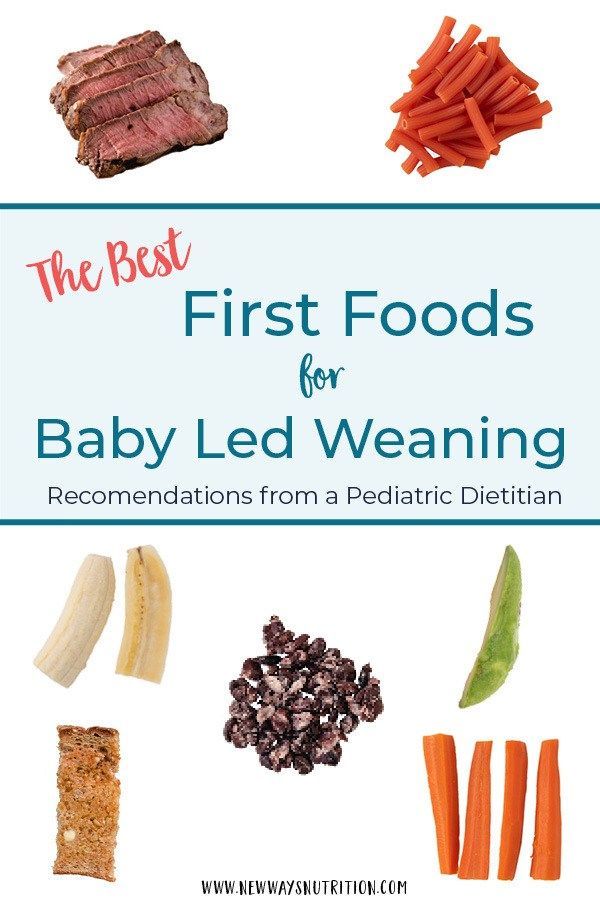 Try these with your baby.
Try these with your baby.
- Spinach pancakes (moisten with applesauce or plain yogurt if needed; this recipe is particularly moist and great for babies)
- Oatmeal, cooked according to package directions and allowed to cool
- Baby Puffs
- Peanut Butter Puffs
- Rice (it’s easiest if it’s in little clumps so baby can pick it up; this Coconut Rice or this Cheesy Rice are both good options)
- Baby Banana Muffin
- O cereal (soften in nondairy unsweetened milk or yogurt as needed)
- Baked Oatmeal, diced
Finger Food Ideas: Proteins
Offering proteins will continue to expose baby to a range of nutrients. These are my go-tos for babies newer to finger foods—and toddlers too.
- Shredded cheese (thicker cuts are a little easier to pick up)
- Tofu, diced and sauteed lightly or steamed
- Flaked cooked wild salmon
- Lightly mashed meatballs
- Shredded chicken, cut up finely (we love this Butter Chicken to share with baby)
- Ground beef, turkey, or chicken, broken into smaller pieces
- Lightly mashed beans
- Scrambled eggs, broken up into small pieces
- Diced egg muffins
I’d love to hear any questions you may have, or if you have foods that your babies enjoy that I didn’t include here.
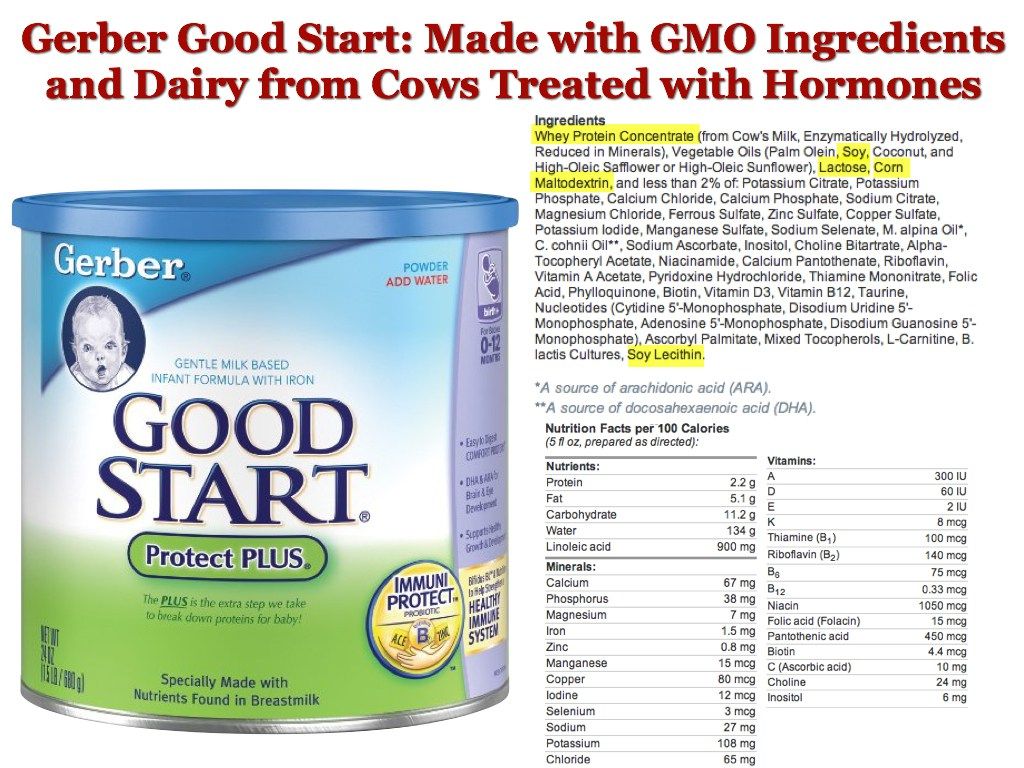 Chime in below in the comments!
Chime in below in the comments!Prep Time 5 minutes
Cook Time 5 minutes
Total Time 10 minutes
Author Amy Palanjian
Cuisine American
Course Baby Food
Calories 124kcal
Servings 1
First Finger Foods (choose 1-3 per meal)
- ▢ 1 Scrambled egg (broken up into small pieces)
- ▢ 1/4 cup Roasted sweet potato, mashed and broken up into small pieces
- ▢ 1/4 cup Fresh raspberries (broken up into smaller pieces)
- ▢ 1/4 cup Oatmeal (cooked according to package directions and allowed to cool)
- ▢ 2 tbsp Tofu (diced and sauteed lightly or steamed)
- ▢ 2 tbsp ground beef, chicken, or turkey, broken up into small pieces or lightly mashed meatballs
- ▢ 2 tbsp shredded cheese or crumbled goat cheese
- ▢ 1/4 cup Mashed sweet potato (broken into little pieces)
- ▢ 1/4 cup Peanut butter puffs
Fruits and Veggies
- ▢ 1/4 cup mashed roasted sweet potato (broken up into small pieces)
- ▢ 1/4 cup warmed frozen peas
- ▢ 1/4 cup Roasted Zucchini
- ▢ 1/4 cup diced Roasted Sweet Potato or Butternut Squash
- ▢ 1/4 cup blueberries (cut in half or quarters)
- ▢ 1/4 cup raspberries (broken into small pieces)
- ▢ 1/4 cup banana slices (broken into small segments—they are less slippery this way versus slicing them)
- ▢ 2 tbsp avocado (diced and mashed slightly—be sure it's ripe and very soft)
Whole Grains and Carbohydrates
- ▢ 1 Spinach pancakes (moisten with applesauce or plain yogurt if needed; this recipe is particularly moist and great for babies)
- ▢ 1/4 cup Oatmeal (cooked according to package directions and allowed to cool)
- ▢ 1/4 cup Baby Puffs
- ▢ 1/4 cup Peanut Butter Puffs
- ▢ 1/4 cup fully cooked rice (it's easiest if it's in little clumps so baby can pick it up; this Coconut Rice or this Cheesy Rice are both good options)
- ▢ 1 Baby Banana Muffin
- ▢ 1/4 cup O cereal (soften in nondairy unsweetened milk or yogurt as needed)
- ▢ 1/4 cup Baked Oatmeal (diced or regular oatmeal broken into little pieces)
Dairy
- ▢ 2 tbsp Shredded cheese (such as mozzarella)
- ▢ 2 tbsp Tofu (diced and sauteed lightly or steamed)
- ▢ 2 tbsp flaked cooked wild salmon
- ▢ 1 lightly mashed meatballs
- ▢ 2 tbsp finely shredded chicken (we love this Butter Chicken to share with baby)
- ▢ 2 tbsp ground beef, turkey, or chicken (broken into smaller pieces)
- ▢ 2 tbsp lightly mashed beans
- ▢ 1 Scrambled egg (broken up into small pieces)
- ▢ 1 Diced Egg muffins
For each meal or snack, choose 2-3 foods from a mix of food groups.
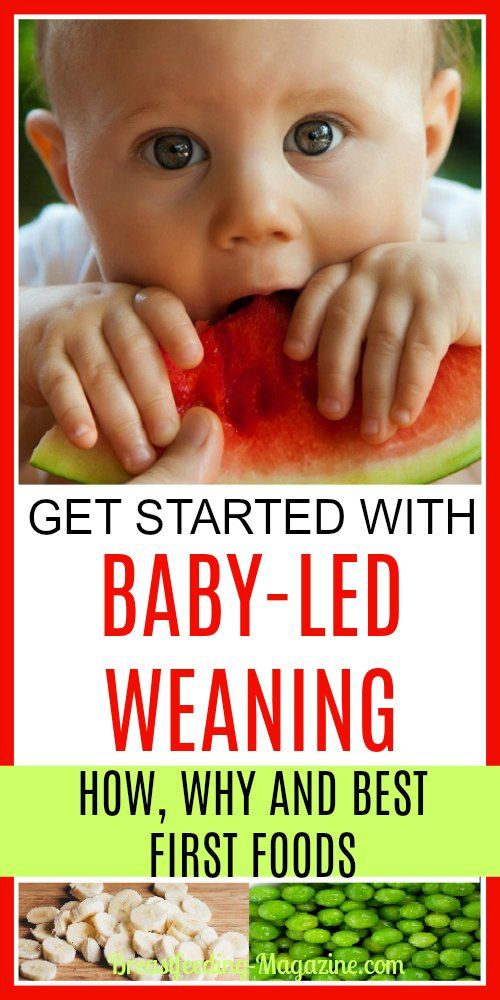 Aim to include some fat in most meals and protein in many too.
Aim to include some fat in most meals and protein in many too.Prepare the food, cutting into small pieces and/or mashing as needed to make the food easy to eat.
Start with small portions and allow more as baby indicates according to their hunger.
- Store leftovers in an airtight container for 3-5 days in the fridge.
- Many foods you cook for your family will work as baby finger foods—just be sure they are easy to squish between your fingers and the pieces are small and easy to chew.
- Babies very normally make a lot of faces when they eat, so don't assume they don't like something just because they scrunch their nose!
- Flavors and textures can take time to learn to eat, so continue offering foods in small portions even if baby hasn't liked them in the past—and make sure they taste good to you!
Calories: 124kcal, Carbohydrates: 14g, Protein: 7g, Fat: 4g, Saturated Fat: 1g, Polyunsaturated Fat: 1g, Monounsaturated Fat: 2g, Trans Fat: 1g, Cholesterol: 164mg, Sodium: 81mg, Potassium: 344mg, Fiber: 4g, Sugar: 5g, Vitamin A: 9857IU, Vitamin C: 18mg, Calcium: 51mg, Iron: 1mg
Tried this recipe?Rate in the comments and tag @yummytoddlerfood on IG!
Snack in baby food - Encyclopedia Baby food
General
Levchuk Victoria© Snack in baby food Snack in baby food must be present. After all, a child, unlike an adult, cannot withstand more than 2 hours without eating. Moreover, they have a faster metabolism, and more energy is spent, which is why it is so important to fill the child's nutritional needs in time.
After all, a child, unlike an adult, cannot withstand more than 2 hours without eating. Moreover, they have a faster metabolism, and more energy is spent, which is why it is so important to fill the child's nutritional needs in time.
Intermediate meals during the day, along with breakfast, are perhaps the most important meal in a child's diet. Research shows that organizing snacks at home can help you avoid unnecessary calories and saturated fat, sugar, and salt. When we talk about a healthy diet for a child, this means that all the meals of the day are put in order, even those that come in between main meals. nine0003
As for the quality of a healthy snack, it should include basic ingredients such as carbohydrates and proteins, as well as micronutrients such as calcium, which will provide the necessary energy for the child and at the same time contribute to his good development.
Examples of healthy snacks in baby food:
- 1 milkshake with semi-fat milk (up to 2% fat) and fresh fruit, whipped in a blender and with 1 tablespoon of honey
- 1 toast or 1 boiled cheese pie turkey and 1 fruit
- 1 fruit salad with honey and 1 yoghurt (2%)
- 1 glass of milk with cereal bar and honey
- 1 cake it is helpful to provide some more enticing solutions for the child, but cook them at home from healthy foods.
 Cooked homemade cookies or cake from familiar ingredients can be given to the baby two or three times a week. If your child likes croissants or chocolate chip cookies, then you can allow him to eat them as a snack once a week, but be sure to add something healthy to his favorite treats, such as fruit or milk. nine0003
Cooked homemade cookies or cake from familiar ingredients can be given to the baby two or three times a week. If your child likes croissants or chocolate chip cookies, then you can allow him to eat them as a snack once a week, but be sure to add something healthy to his favorite treats, such as fruit or milk. nine0003 At the moment it is important to note that most parents find it easier to buy snacks in the store than to prepare them themselves. But it is necessary to consider what we invest in the future health of our child. Therefore, if time is limited, then it is worth considering simple snacks, like a whole fruit or a cereal bar. In kindergartens, a snack usually consists of fruits, children get an apple or an orange for breakfast, etc. This is a good snack, although I would definitely add cereal bars or cookies to an apple, as this fruit provokes a desire to have a snack after 20 minutes. nine0003
It is also important to properly organize the time of the whole family. If it is not possible to prepare good homemade snacks for school for a child in the morning, then this issue must be resolved in the evening.
 And on the weekend, make a list of foods that are suitable for snacking between main meals. Healthy fruit should always be purchased on the weekend and be within reach of the child so that he can wash and peel the fruit himself and eat it. By the way, not only fruit should act as a snack, vegetables are also great for a snack. For example, fresh carrot sticks and cabbage leaves are an excellent snack, and you can also offer your child fresh pumpkins of sweet varieties. nine0003
And on the weekend, make a list of foods that are suitable for snacking between main meals. Healthy fruit should always be purchased on the weekend and be within reach of the child so that he can wash and peel the fruit himself and eat it. By the way, not only fruit should act as a snack, vegetables are also great for a snack. For example, fresh carrot sticks and cabbage leaves are an excellent snack, and you can also offer your child fresh pumpkins of sweet varieties. nine0003 Baby food snacks can be bought at the store, but then you need to read the ingredients of the product carefully in order to firstly provide the child with important nutrients, and secondly, to exclude harmful additives, especially sugar.
Social networks:
Recipes according to GOST for children in kindergarten from 1 to 7 years. Proven recipes with step by step photos, calories and cooking time. Breakfasts for children, lunches, dinners
Breakfast like in kindergarten Porridge like in kindergarten Soups like in kindergarten Second courses like in kindergarten Side dishes like in kindergarten Kindergarten vegetable recipes Desserts and pastries like in kindergarten Salads like in kindergartenChildren are often reluctant to eat in kindergarten.
 The food is unusual, not homemade, “strange”.
The food is unusual, not homemade, “strange”. But it often happens the other way around: “I want it to be like in a kindergarten!”. If this is your case, then this collection of kindergarten-style recipes is perfect for you and your child. Read more
Quince has a pleasant aroma and delicate fruity taste, and can be used to make a variety of dishes, including delicious desserts.
With or without apples, with jam or sour cream, these pancakes are good for everyone.
Sauerkraut soup like in kindergarten is recommended for older children.
Kindergarten-style cheese omelette is a wonderful breakfast for the whole family. Due to the presence of cheese in the recipe, the omelet is not bland, so parents will also like it. nine0003
Oranges - citruses, which we see on the shelves of shops all year round.
Fish baked in an omelette like in a kindergarten - a dish that is absolutely predictable in taste.
Too many parents experience their children's dislike for vegetables, and this is often frustrating.

Adding another great soup to my kindergarten recipe box. Bean dishes are always hearty and healthy, and green peas, moreover, not only cook quickly, but also please with their beautiful green color. nine0003
After a year, the children's menu expands significantly and one of the first dishes that are introduced into the diet of babies is puree soups.
Pretty hearty, thanks to potatoes, and fresh, thanks to cucumber, the salad will surely appeal to children.
In winter and spring, it is recommended to introduce dried fruits into the children's diet, since fresh fruits at this time of the year contain much less vitamins and nutrients.
One more salad in the piggy bank of recipes according to the kindergarten flow charts. nine0003
From the age of about a year, fruits are introduced into the child's diet. Of course, if a child has few teeth and still cannot chew pieces, then we can only talk about fruit purees.
I would never have thought that rabbit meatballs like in kindergarten can be so tender and juicy!
Carrots stewed with rice and prunes, as in kindergarten - hearty, tasty, slightly sweet and, thanks to prunes, very fragrant dish.
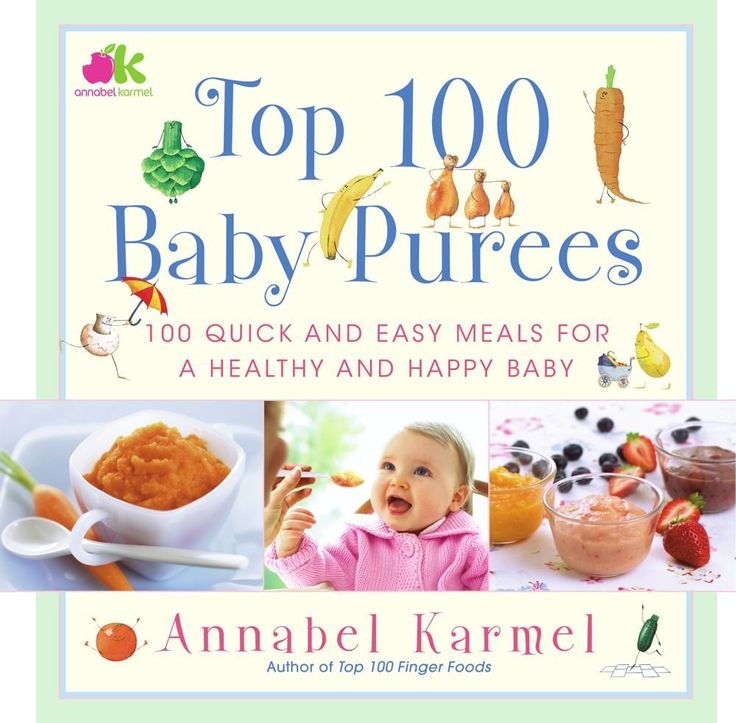 nine0003
nine0003 Almost everyone remembers this pasta and cottage cheese casserole, it was a frequent guest on the tables in many kindergartens.
Boiled pasta baked with eggs, as in kindergarten, is suitable not only for a children's table, but can also be an interesting side dish for people on a diet (suitable for diets No. 3, No. 4c, diets No. 6, 7, 8, 10 , 11 and 15).
Soup-puree from zucchini, like in kindergarten, turns out to be very tender, calm, pleasant to the taste. nine0003
How many children love cauliflower? I don't know them :) Usually, the very smell of boiled cauliflower already drives the children out of the kitchen, but not in this case.
Fish patties with vegetables baked like in kindergarten - quite an interesting dish.
Tasty and fragrant garnish with a golden crust is potatoes baked in sour cream, like in a kindergarten.
Now even small children know that eating vegetables is healthy, but few people realize that the color of these vegetables is also of great importance.
 nine0003
nine0003 Tasty, hearty and healthy chopped chicken fillet with scrambled eggs and vegetables, cooked like in a kindergarten, the whole family will like it.
Using the most common and familiar products in every kitchen, let's cook krupenik like in kindergarten.
Children are often reluctant to eat in kindergarten. The food is unusual, not homemade, “strange”.
But it often happens the other way around: “I want it like in kindergarten!”. If this is your case, then this collection of kindergarten-style recipes is perfect for you and your child. nine0110
In addition, all the recipes from this collection are prepared according to technological maps for preschool institutions and are ideal for organizing baby food.
If your "Nehochuha" eats mostly pasta and refuses to eat anything else, you will find suitable options here to diversify your child's diet.
For example, if a child eats semolina porridge in kindergarten, but refuses to eat it at home, you can find here a recipe for semolina in the form in which the child eats it in kindergarten.
